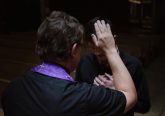Nicholas Hardesty for March: Three easy ways to defend the Resurrection
Although we are still focused on the season of Lent, Easter will be here soon. You know what that means: it’s “open season” on the Resurrection. The History Channel will reveal a “secret Gospel” that contradicts Jesus’ rising from the dead. Atheists on Facebook will start posting memes about “Zombie Jesus.” News networks will trot out their “Bible expert” who will explain that the Resurrection “probably didn’t happen” the way the Bible describes.
Of course, not everyone who questions the Resurrection is trying to stir up higher ratings or more Facebook followers. Most people genuinely want to know, “Why do you believe Jesus rose from the dead?”
Let’s get ready to respond. Here are three simple points you can use to defend the Resurrection.
1. The Gospels Describe What Actually Happened
As Catholics, we believe the Gospel accounts are true because the Bible is inspired. But, for non-Christians we need other reasons.
Try this: imagine you’re a historian researching an event that happened long ago. What would you do? One approach would be to read the written accounts of those who witnessed the event.
That’s what the Gospels are: the eyewitness accounts of the earliest followers of Jesus. The authors themselves tell us they intended to faithfully record what they saw, or what they received from those who saw it (Luke 1:1-4; John 21:24-25). As an unbiased researcher, we would have to give them some credence.
2. There’s No Better Explanation
The Gospels tells us that when Jesus’ followers came to the tomb, they found the stone rolled away, the burial garments piled in the corner, and the tomb empty (Matthew 28:1-8; Mark 16:1-8; Luke 24:1-12; John 20:1-10). They knew that Jesus had risen.
If anyone challenges this, just ask them, “Do you have a better explanation?” There are many theories, but they’re all ridiculous:
“The apostles stole the body” It’s not possible to roll away the heavy stone, remove the burial garments, and run away with the body without waking the guards.
“Jesus was still alive when they buried him” In other words, perhaps Jesus regained consciousness, rolled away the stone, and walked out. Really? The Romans were experts at execution. The soldier who broke the legs of the crucified (to hasten their death) did not break Jesus’ legs because Jesus was already dead (John 19:31-33). At any rate, Jesus was too bruised and beaten to roll away the stone or walk around town without the soldiers stopping Him.
“The tomb wasn’t empty” Perhaps the whole thing was made up. Doubtful. For one, Jesus’ enemies didn’t even doubt that the tomb was empty (Matthew 28:11-15). And if any of the contemporaries of the apostles doubted, they could just go to the tomb and see for themselves. It would have been impossible to lie about it.
3. Many People Saw the Resurrected Jesus
If Jesus did not die and then rise to new life, why did so many people see Him during those 40 days after His Resurrection? First, the women saw Jesus (Mark 16:1,7). Then Peter, then the Twelve, then more than 500 at once, then James, and finally, Paul himself (1 Corinthians 15:5-8). This couldn’t have been visions of a spirit. They “took hold of His feet” (Matthew 28:9). They handled His hands (Luke 24:39). He ate fish (Luke 24:42-43). Thomas put his hand right into Jesus’s side! (John 20:27). Jesus was very physically present to them. Plus, 500 people don’t hallucinate all at once, and hallucinations don’t last 40 days. The truth is: Jesus has risen! This is what Easter is all about, and when Easter comes, we will have good reason to celebrate.
Nicholas Hardesty develops new digital courses for Vocare, the Archdiocese of Cincinnati’s online catechist certification process. Contact him with new course ideas at [email protected].














